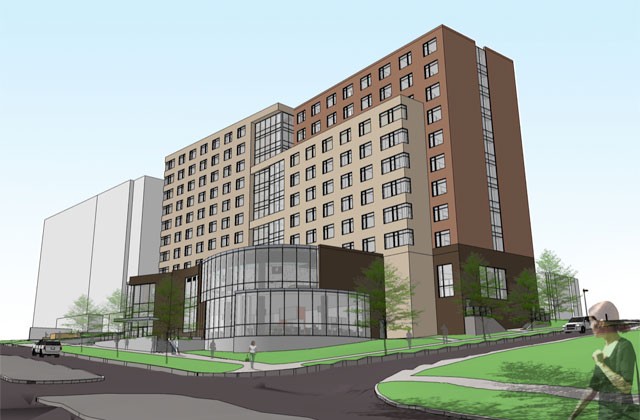We'd like your input - recent projects, photo/s, renderings, and expert insight - on an important article we're working on for our Jan 2013 issue:
HIGHER EDUCATION: Residence Halls, Student Unions, and ‘Quality of Life’ Factors in the Halls of Ivy
With total costs exceeding $50,000 at many colleges/universities, and with U.S. student debt nearing $1 trillion, will institutions be forced to cut back on "quality of campus life" buildings: residence halls that rival the Ritz, student unions and refectories that go well beyond the basics of bed and board, recreation centers that may seem over the top in their amenities? What about other "quality of campus life" buildings?
We're not talking about basic classroom, science & technology, or administrative buildings here. We're interested in those structures that are not, strictly speaking, essential to the curriculum or administration of the institution - those facilities that serve to enhance the "quality of campus life."
The essential question: Have colleges and universities gone too far with these structures? Or does competition for top students, institutional pride, or some other factor make it essential that institutions of higher learning keep raising the bar? And who's going to pay for these facilities?
Please send project information, PDFs, photo/s, renderings, and related information to our Contributing Editor, Susan Bady (susanbady@sbcglobal.net).
Please also let Susan know the name and contact info (email, phone, office location) of your top expert on higher-ed facilities.
Deadline: Due to the Thanksgiving holiday, we'd like to get these materials by Friday, Nov 16, if possible.
Thanks for your help, and BD+C looks forward to working with you on this important article. +
Related Stories
| Oct 6, 2011
GREENBUILD 2011: Growing green building market supports 661,000 green jobs in the U.S.
Green jobs are already an important part of the construction labor workforce, and signs are that they will become industry standard.
| Oct 6, 2011
GREENBUILD 2011: Dow Corning features new silicone weather barrier sealant
Modular Design Architecture >Dow Corning 758 sealant used in GreenZone modular high-performance medical facility.
| Oct 6, 2011
GREENBUILD 2011: NEXT Living EcoSuite showcased
Tridel teams up with Cisco and Control4 to unveil the future of green condo living in Canada.
| Oct 6, 2011
GREENBUILD 2011: Kingspan Insulated Panels spotlights first-of-its-kind Environmental Product Declaration
Updates to Path to NetZero.
| Oct 5, 2011
GREENBUILD 2011: Johnson Controls announces Panoptix, a new approach to building efficiency
Panoptix combines latest technology, new business model and industry-leading expertise to make building efficiency easier and more accessible to a broader market.
| Oct 5, 2011
GREENBUILD 2011: Software an architectural game changer
Interactive modeling software transforms the designbuild process.
| Oct 5, 2011
GREENBUILD 2011: Tile manufacturer attains third-party certification for waste recycling processes
Crossville has joined with TOTO to recycle that company’s pre-consumer fired sanitary ware.
| Oct 5, 2011
GREENBUILD 2011: Sustainable construction should stress durability as well as energy efficiency
There is now a call for making enhanced resilience of a building’s structure to natural and man-made disasters the first consideration of a green building.
| Oct 5, 2011
GREENBUILD 2011: Solar PV canopy system expanded for architectural market
Turnkey systems create an aesthetic architectural power plant.
| Oct 5, 2011
GREENBUILD 2011: Kohler builds sustainable booth at Greenbuild 2011
In a setting composed of reclaimed materials, biodegradable signage, energy-efficient lighting and more, exhibitor highlights its new products with ecological awareness.

















